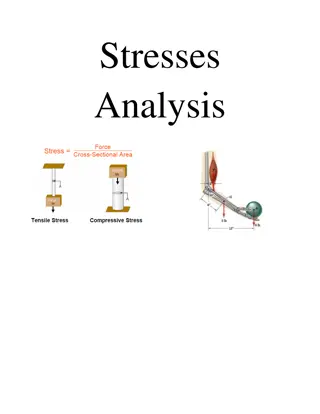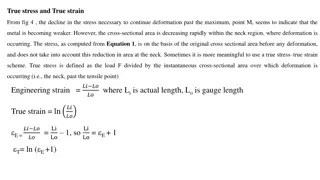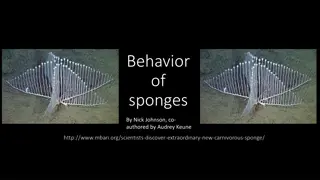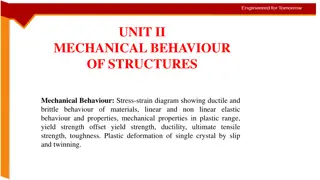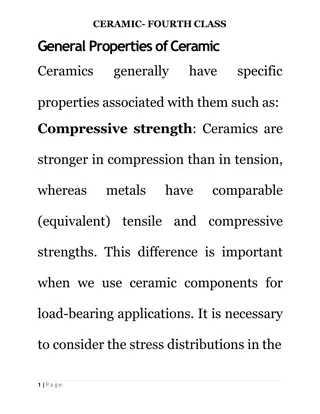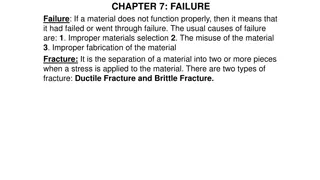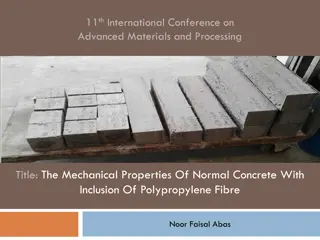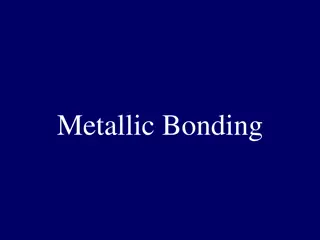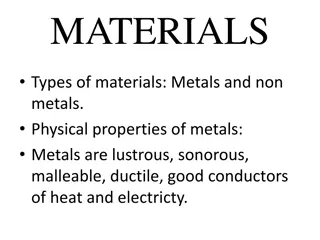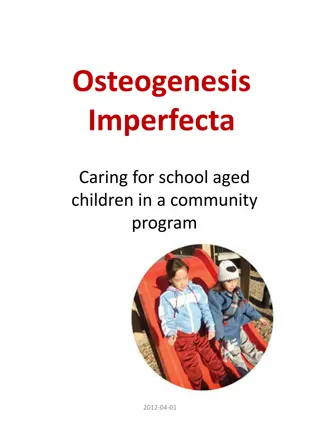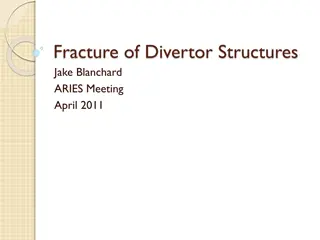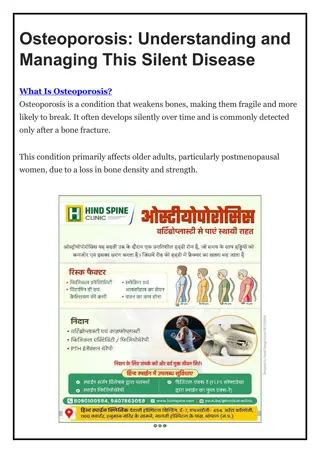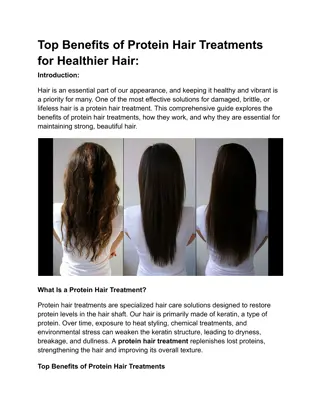ENAMEL
Enamel, the hardest calcified tissue in the human body, forms a protective covering over the teeth, adapting them for mastication. Its thickness varies across different surfaces of the teeth, with maximum thickness found on cusps. The structure of enamel makes it brittle, especially when it loses su
2 views • 46 slides
Stresses and Analysis in Engineering
Stress is the internal resistance in a body when deformed, measured in Pascal (Pa) or Mega Pascal (MPa). Types of stress include shear, torsional, tensile, compressive, and bending stress. The relationship between stress and strain is crucial in material analysis, with materials categorized as ducti
3 views • 8 slides
Meeting Stephen Hawking: A Differently Abled Encounter in Cambridge
Firdaus Kanga, a writer with brittle bones, meets the renowned scientist Stephen Hawking in Cambridge. Despite their physical challenges, they engage in a profound conversation that touches both their hearts. Hawking, known for his brilliance in astrophysics despite being paralyzed, shares his thoug
0 views • 13 slides
True Stress and Strain in Materials
In materials engineering, the use of true stress and true strain provides a more accurate representation of material behavior, especially in regions undergoing deformation like necking. True stress considers the instantaneous cross-sectional area, accounting for changes in the material's strength du
0 views • 15 slides
Insights into the Behavior and Life Cycle of Sponges
Sponges exhibit unique behavior characteristics both externally and internally. They are sedentary organisms with cylindrical bodies that can be soft or hard, flexible or brittle. Sponges reproduce via sexual and asexual methods, and go through a life cycle from larvae to adulthood. Their reproducti
0 views • 6 slides
Mechanical Behavior of Structures: Stress-Strain Diagrams and Elastic Properties
Understanding the mechanical behavior of structures involves analyzing stress-strain diagrams, distinguishing between ductile and brittle materials, exploring linear and non-linear elastic properties, studying plastic deformation, yield strength, ultimate tensile strength, and toughness. Elastic beh
0 views • 32 slides
Ceramic Properties: Strength, Brittle Behavior, and More
Ceramics exhibit specific properties such as high compressive strength, brittleness due to mixed ionic-covalent bonding, low fracture toughness, poor electrical and thermal conduction (except for some types), and chemical insensitivity. While strong in compression, ceramics are brittle and lack duct
0 views • 13 slides
Material Failure and Fracture
The process of material failure and fracture, including ductile and brittle fractures, is essential in understanding why materials do not function properly. Ductile fracture involves plastic deformation and slow crack propagation, absorbing a lot of energy. In contrast, brittle fracture occurs rapid
0 views • 10 slides
Mechanical Properties of Concrete with Polypropylene Fibre Inclusion
Concrete is a brittle material that is strong in compression but weak in tension. In this study, the focus is on enhancing the mechanical properties of normal concrete by including polypropylene fibers. The inclusion of fibers helps improve crack resistance and flexural strength, acting as crack arr
0 views • 17 slides
Metallic Bonding and Its Properties
Metallic bonding involves the delocalization of electrons among metal atoms, creating a unique structure known as the electron sea. This structure allows for properties such as high melting points, conductivity of heat and electricity, malleability, and ductility. Metals are able to conduct heat and
0 views • 12 slides
Physical and Chemical Properties of Metals and Non-metals
Metals exhibit physical properties like lustrous appearance, ductility, malleability, and sound production. They are also good conductors of heat and electricity. Non-metals, on the other hand, are brittle, non-sonorous, and poor conductors of heat and electricity. The chemical properties include re
0 views • 13 slides
Osteogenesis Imperfecta: Care in a Community Program
Osteogenesis Imperfecta (OI), also known as brittle bone disease, is a genetic disorder characterized by fragile bones that break easily, affecting bone quality and mass. Children with OI may experience short stature, weak tissues, muscle weakness, loose joints, and other health issues. There are ei
0 views • 16 slides
Fracture Mechanics in Engineering Structures
Explore the world of fracture mechanics in engineering structures, encompassing the importance of stress fields, crack tip behaviors, fracture toughness, ductile versus brittle materials, and the influence of temperature dependence on material properties. Delve into the intricacies of crack initiati
0 views • 22 slides
Osteoporosis - Hind Spine Clinic
Osteoporosis is a condition that weakens bones, making them brittle and prone to fractures. It occurs when bone density decreases due to factors like aging, hormonal changes, poor nutrition, or a sedentary lifestyle. Common fracture sites include the
3 views • 4 slides
Top Benefits of Protein Hair Treatments for Healthier Hair
Hair is an essential part of our appearance, and keeping it healthy and vibrant is a priority for many. One of the most effective solutions for damaged, brittle, or lifeless hair is a protein hair treatment.
0 views • 5 slides

